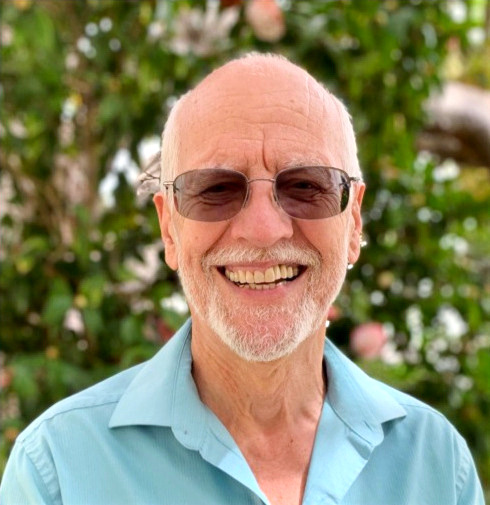The Basics of Recovery (Wisdom of the 12-Steps)
- Connard Hogan

- Sep 7, 2021
- 4 min read
Updated: Aug 26, 2022

Bottom line: You don't need to be a victim of your circumstances, and like the smithy forging metal, you can reshape yourself.
We're all recovering from something or other. So, when you find your behavior, or whole life, is out of control . . . when you've suffered enough . . . when you're "sick and tired of feeling sick and tired" . . . then reach out, seek help.
I’ve posted previously about my thesis/relationship to the “12-Steps of Recovery.” Though there are books, movies, other blogs and groups on-line available to learn more about this subject, I’ll provide an overview of the steps here.
First, here’s a brief history of the origin of the 12-Steps. In the mid-1930’s, Bill W. struggled to gain control over his alcoholism. Over time, with the help of the “Oxford Group utilizing 6-Steps” and following a “spiritual awakening,” he gained sobriety. Those 6-Steps morphed into the current 12-Steps, along with the accompanying mutual support meetings called AA (Alcoholics Anonymous). Since then many support-group variations have been created, such as NA (Narcotics Anonymous), SAA (Sex Addicts Anonymous), OA (Overeaters Anonymous) . . . and the list goes on.
While working in a drug/alcohol treatment facility, I came across the following thumbnail version of the 12-Steps. Roughly, divided into three parts of four steps each, they are: 1) Seek God; 2) Clean house; and 3) Help others.
Read on, don’t let the word “God” turn you off. During Bill W. and Dr. Bob’s time, more people, I suspect, accepted the term “God.” Regardless, I heard numerous individuals in treatment say they wanted no part of “religion.” Over time, the term “higher power” replaced “God” within the 12-Step programs. Newcomers to 12-Steps were/are encouraged to “find a higher power,” to which to surrender their “control of their addiction.” At one meeting, newcomers were encouraged to adopt a chair as their “higher power,” if that would work for them. (Caution: avoid judging this technique. If it allows space/opportunity for an individual to start recovery, so be it. “Live and let live.”)
Steps 1-4 involve giving up one’s control over an addiction (problem), giving up dealing with it alone (connecting to others), and beginning to “surrender the burden” (finding a higher power).
Steps 5-8 involve looking inward in an honest way, examining destructive past behavior and the damage created, and taking responsibility for one’s actions. In other words, these include cleaning out the “stinking thinking,” replacing destructive attitudes and ways of reacting, apologizing to self and others (make amends, when appropriate), and developing the habit of self-examination and self-regulation.
Steps 9-12 involve helping others, “passing it on,” avoiding isolation by continuing to reach out, avoiding the attitude of “I’m cured,” and practicing and deepening skills learned.
Recovery is about action, requiring an active involvement in change. Those wanting/needing to recover must “work” the 12-Steps, if those steps are to be of help. Though the potential for relapse is ever-present, relief from the “problem” can be achieved, and even in the event of relapse, a new beginning always awaits. Rinse and repeat, as necessary . . . “the stains will fade,” though never be completely removed.
As mentioned, I’ve came to believe that the 12-Steps of Recovery, regardless of the “problem behavior,” can be applied successfully to a range of excessive/habituated behaviors, beyond alcoholism and drug addiction. Consider the 12-Steps support groups already established. And if there isn’t one existing nearby for a particular problem behavior . . . one can be started!
If I’ve rubbed a nerve the wrong way, I request you examine your objection(s) and consider that application of the 12-Steps to one’s life has been, and always will be, voluntary and that “recovery is an inside job.
Here’s my personal experience with Step One. At what I consider the lowest point in my life, following my military service which included a one-year tour in Vietnam ‘69-’70, I’d returned to college to complete a bachelor’s degree. I’d been experiencing reoccurring symptoms of acute “gut-aches.” Not sure what caused that pain, I’d sought help at the on-campus medical center, though the doc there hadn’t identified their cause. When a girl I loved—thought I did anyway—broke up with me, I found myself isolated and having suicidal thoughts. Soon after my next episode of “gut-ache,” I visited the on-campus medical center, again! The doc offered me an atropine script. Trained in army “basic” to use atropine as an antidote for nerve gas, I knew it to be serious stuff and nothing to trifle with. His offer “upped the stakes.” In misery, overwhelmed, alone, desperate, not wanting to die from atropine poisoning and feeling compelled, I blurted to him, “I don’t want to be this way anymore,” and accepted a referral for counseling on campus, instead. With that, I’d taken a first step and admitted powerlessness over my problem (suicidal thoughts/feelings). My first on-campus counseling session started a journey of self-examination.
Photo Credit: Jonny Gios - Unsplash







Comments